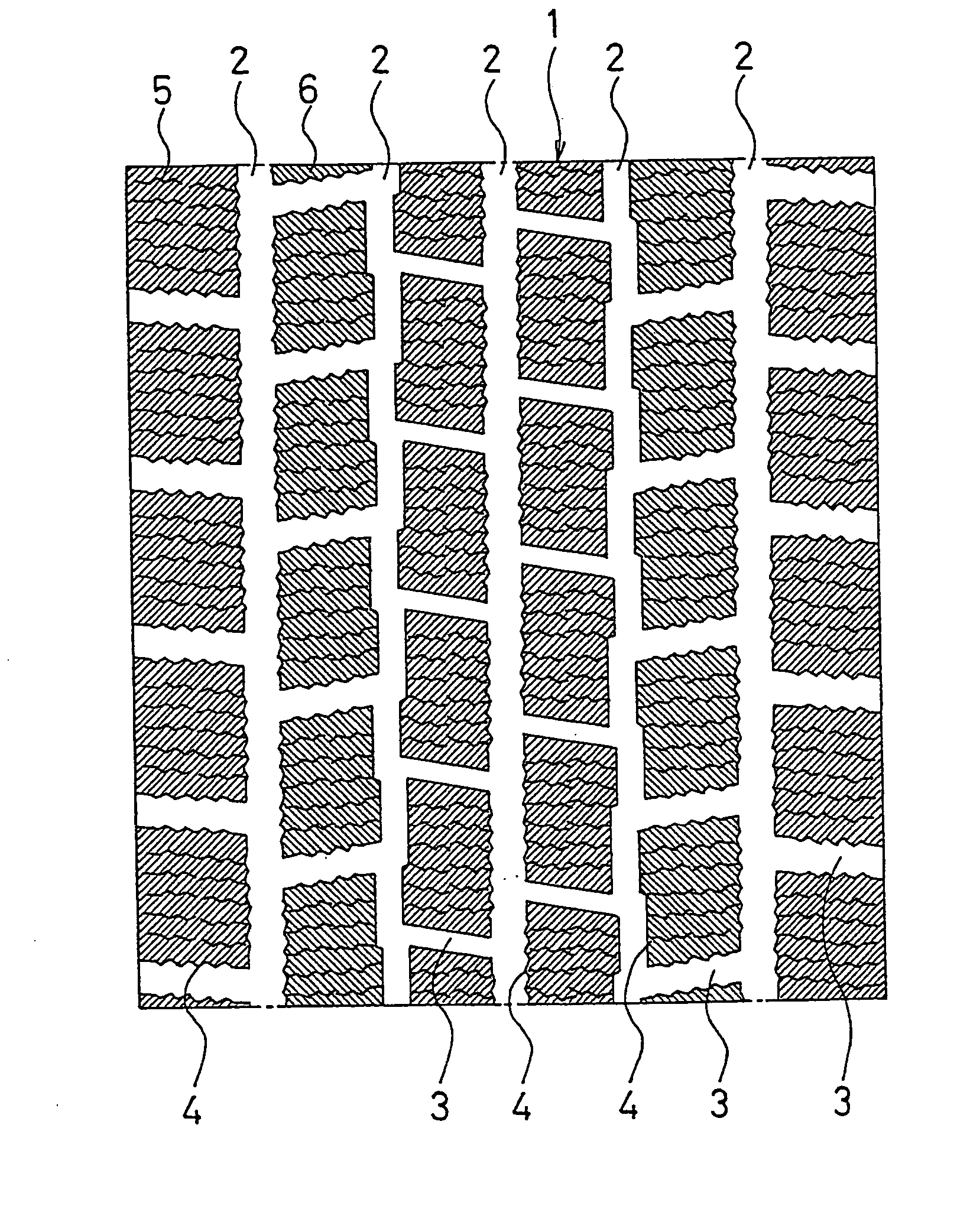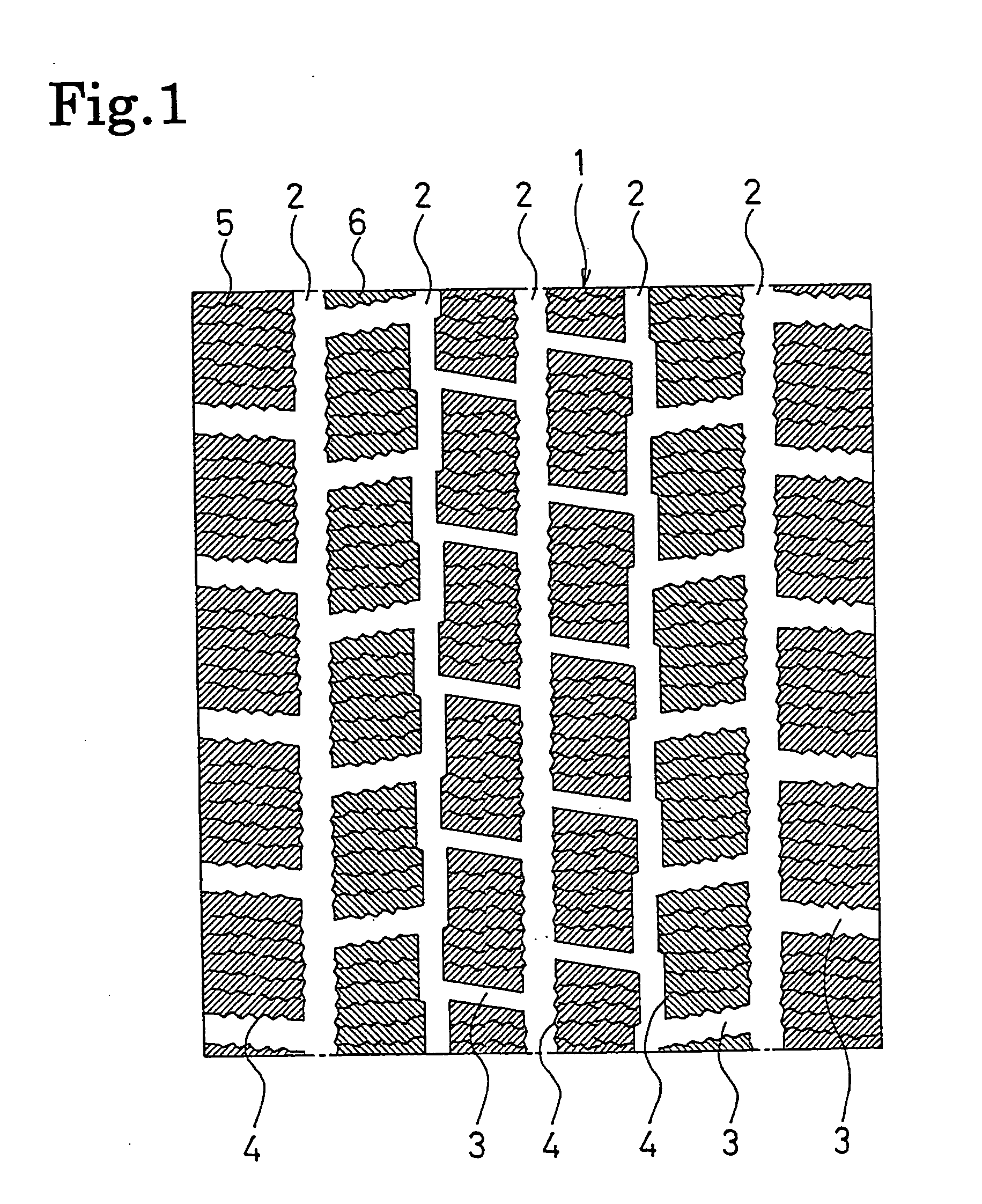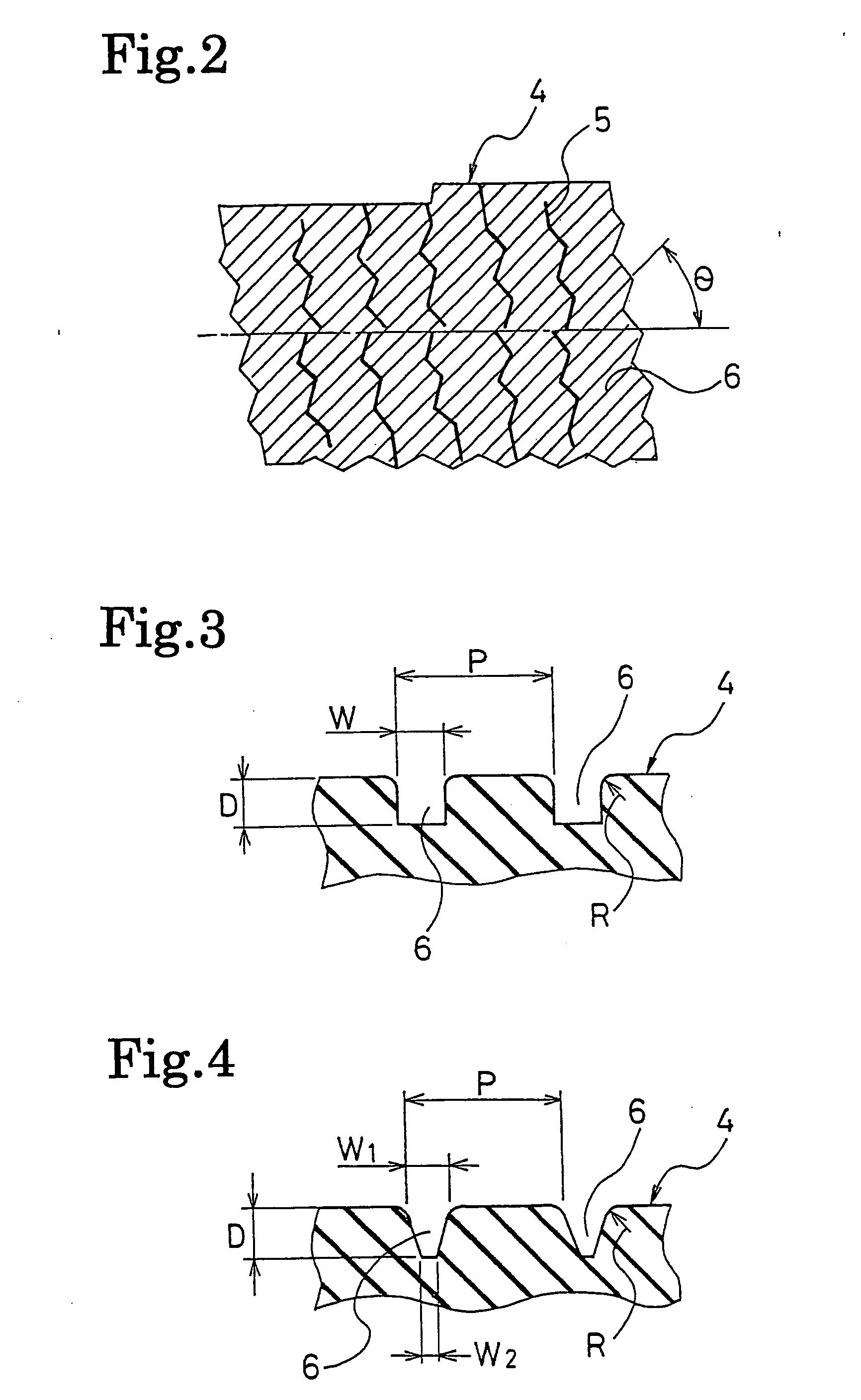Pneumatic tire for ice-bound or snow-covered road
a pneumatic tire and snow-covered technology, applied in the field of pneumatic tires, can solve the problems of tire not fully exerting its inherent drive performance, snow clogging, snow clogging, etc., and achieve the effect of improving the ability to eliminate snow on the tread surface, early exertion of properties, and improving brake and drive performan
- Summary
- Abstract
- Description
- Claims
- Application Information
AI Technical Summary
Benefits of technology
Problems solved by technology
Method used
Image
Examples
Embodiment Construction
[0027] The invention will be described in detail below with reference to the accompanying drawings.
[0028]FIG. 1 shows a tread pattern of a pneumatic tire for ice-bound or snow-covered roads according to an embodiment of the invention. FIG. 2 illustrates an enlarged view of a block in the tread pattern shown in FIG. 1. FIG. 3 illustrates an enlarged view of fine grooves formed in the block shown in FIG. 2.
[0029] As shown in FIG. 1, tread 1 is provided with a plurality of main grooves 2 extending in a circumferential direction of a tire, and a plurality of lateral grooves 3 extending in a width direction of the tire. The tread 1 is partitioned into a plurality of lands, which are formed of a plurality of blocks 4, by the main grooves 2 and the lateral grooves 3. Each block 4 has a plurality of sipes 5 formed therein. The composition of rubber constituting the tread 1 has a filler or foam mixed therein so that microscopic asperities having the effect of removing a water film develop ...
PUM
 Login to View More
Login to View More Abstract
Description
Claims
Application Information
 Login to View More
Login to View More - R&D
- Intellectual Property
- Life Sciences
- Materials
- Tech Scout
- Unparalleled Data Quality
- Higher Quality Content
- 60% Fewer Hallucinations
Browse by: Latest US Patents, China's latest patents, Technical Efficacy Thesaurus, Application Domain, Technology Topic, Popular Technical Reports.
© 2025 PatSnap. All rights reserved.Legal|Privacy policy|Modern Slavery Act Transparency Statement|Sitemap|About US| Contact US: help@patsnap.com



